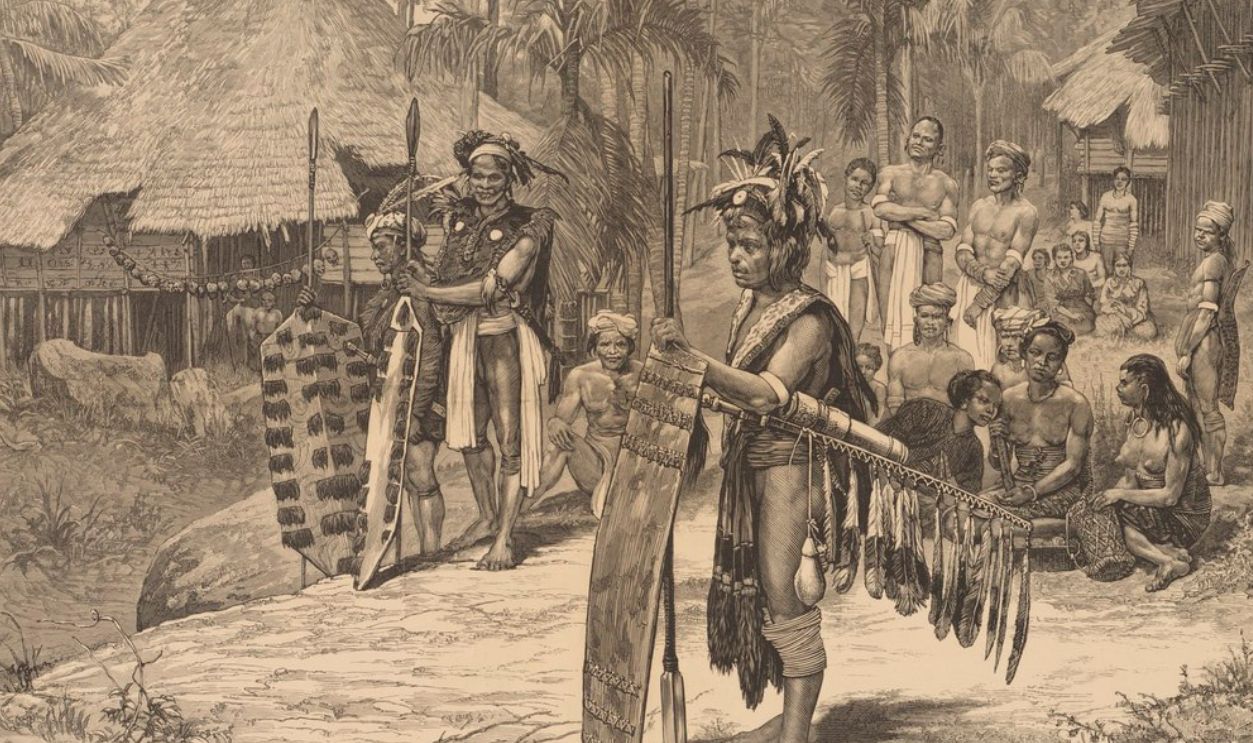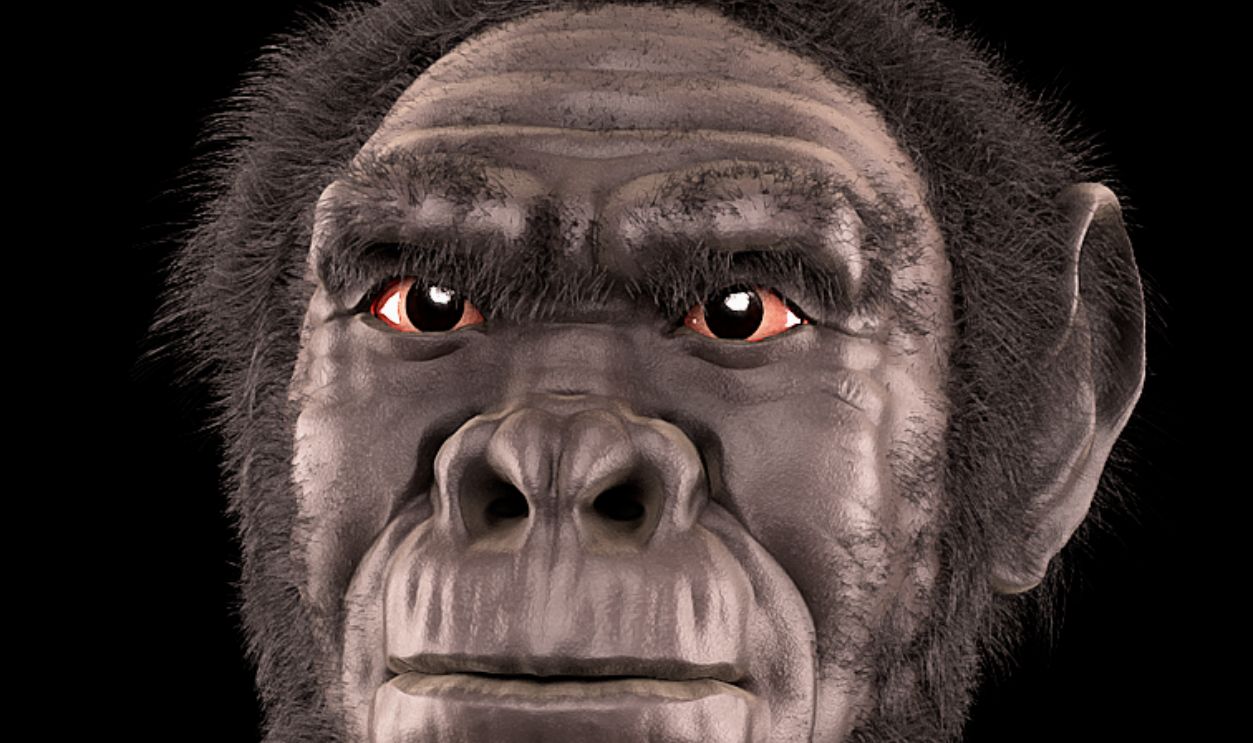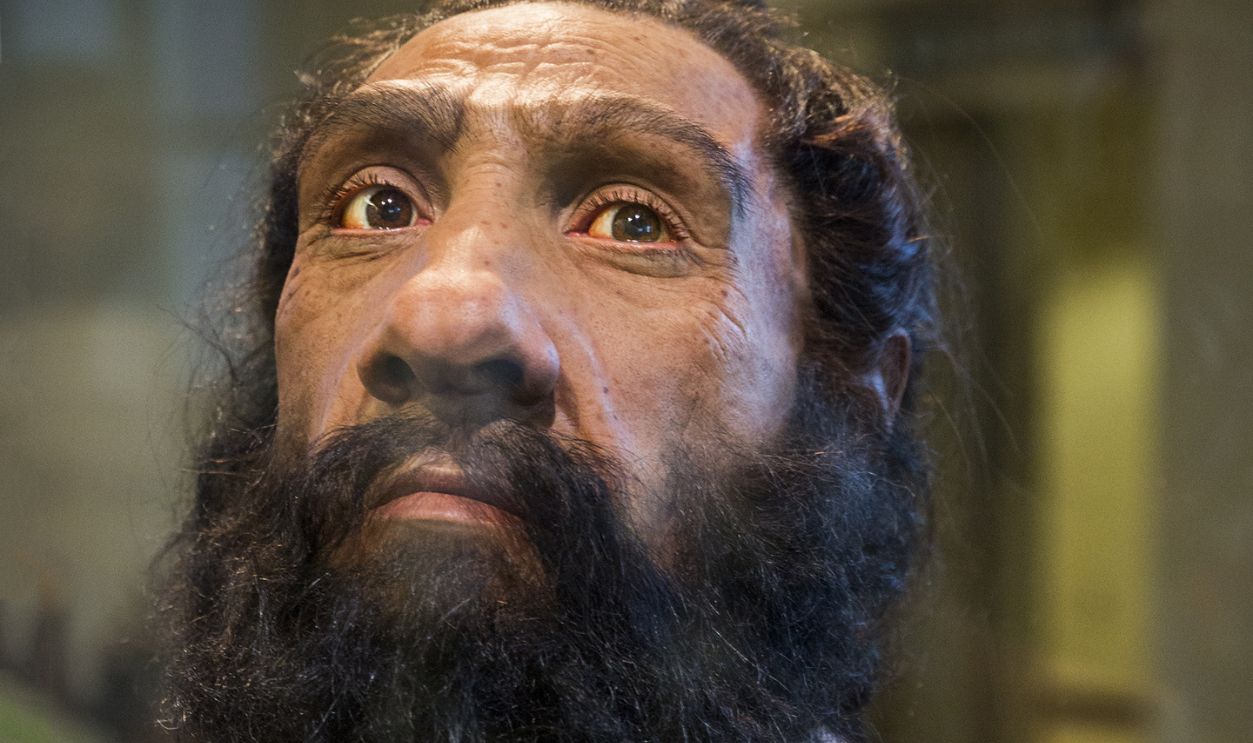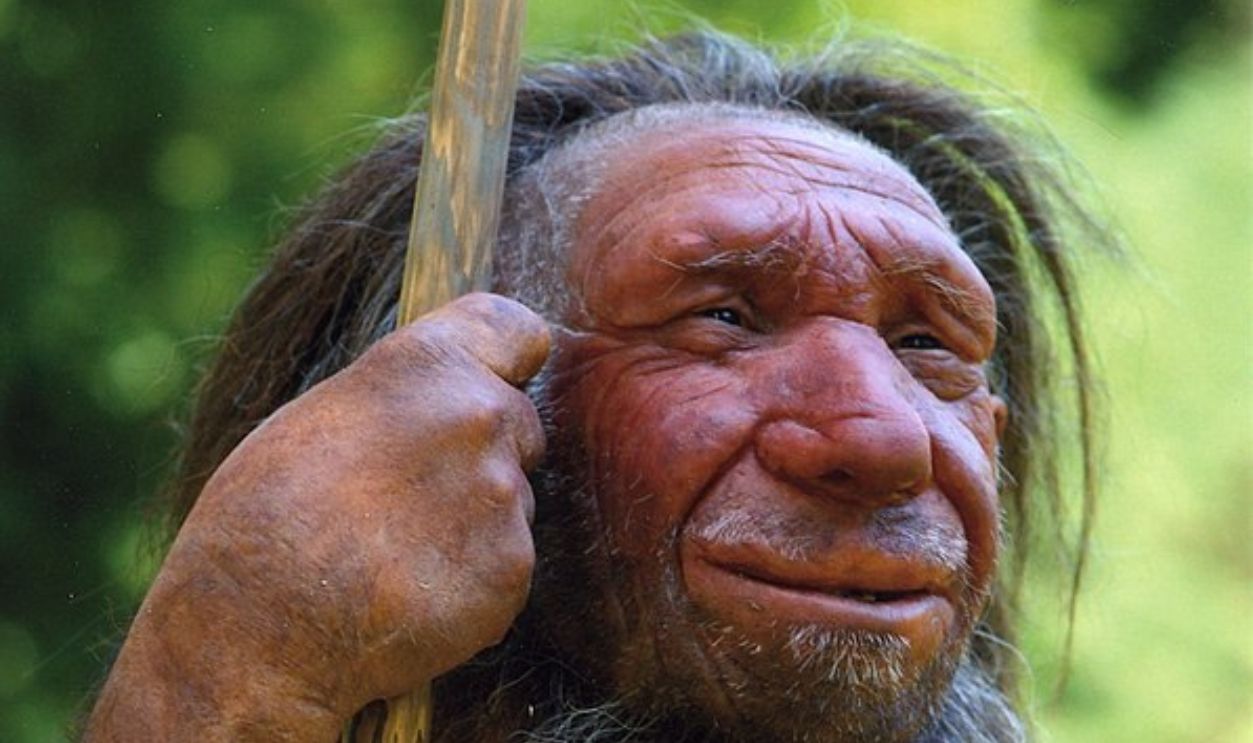Never Before And Never Again
A long time ago, something amazing happened—Homo sapiens, or early humans like us, became the most important and powerful species on Earth. Our road to dominance wasn't easy. To get here, we achieved insane feats never achieved by any species in history.
 Image caption
Image caption
400,000 Years Ago, Homo Sapiens First Appeared
Around 400,000 years ago, Homo sapiens came onto the scene. These ancestors had bigger brains and were better at thinking than those who came before them. They were bound to change the world.
 Special Collections of the University, Wikimedia Commons
Special Collections of the University, Wikimedia Commons
Their Children Crossed Seas And Mountains, Adapting To Various Climates
Early Homo sapiens wanted to explore different places. They traveled across seas and mountains to find new homes. Wherever they landed, they had to find innovative ways to hunt, make clothes, and build shelters.
 MUSE, CC BY-SA 3.0, Wikimedia Commons
MUSE, CC BY-SA 3.0, Wikimedia Commons
Despite Many Challenges, They Always Managed To Survive
Life was challenging for early Homo sapiens. They had to deal with wild animals and bad weather, while scarcity of food was another threat. Nevertheless, they still managed to survive by making tools from stone and bone, learning how to hunt better, and working together in communities.
They Discovered Agriculture And Tamed Animals
One of humanity's biggest milestones happened 12,000 years ago when Homo sapiens learned to farm. They also started taming animals, and both practices allowed them to stay in one place with a steady food supply. Life was becoming more stable for our ancestors.
 Gooreen collection, Wikimedia Commons
Gooreen collection, Wikimedia Commons
Animals Were No Longer Valued Just For Food
Animals helped early humans in many ways, like working and providing food, allowing them to live in larger groups. They were also great companions for early humans, and cave paintings from this time show how important animals were to their lives.
 Hans Drijer, CC BY-SA 3.0, Wikimedia Commons
Hans Drijer, CC BY-SA 3.0, Wikimedia Commons
They Built Villages and Changed Landscapes, Becoming Powerful in the Animal Kingdom
Homo sapiens started building permanent homes that turned into villages and cities. They cleared land for farming and built houses while changing the natural world around them. Humans became more powerful by controlling their environment.
A Sense Of Community Was Established, And Sapiens Became Stronger
As societies grew, humans found new ways to organize, trade, and govern themselves. They got stronger not just by being physically fit but by working together and adapting to new situations. The sense of community was established.
Exploration Led to Art and Dreams
Early Homo sapiens didn't just think about survival—they also got creative. When they explored new places, they made art to show their experiences and thoughts. Cave paintings, carvings, and sculptures became ways for them to tell stories and share their stories.
They Had Stories To Tell
The creation of art allowed them to document their lives and express their spiritual beliefs. Storytelling carried messages from the past and neighboring cultures. As early humans found ways to share their tales, something happened.
 Mettmann, CC BY-SA 4.0, Wikimedia Commons
Mettmann, CC BY-SA 4.0, Wikimedia Commons
Knowledge Passed Down Through 50,000 Generations
The knowledge accumulated by Homo sapiens over multiple generations was passed down—eventually to shape modern society. All the skills and discoveries of early humans have been refined over time to become the foundation of our technological and cultural advancements. But our story started much earlier.
 Special Collections of the University, Wikimedia Commons
Special Collections of the University, Wikimedia Commons
The Story Began A Lot Earlier
Great apes were around for millions of years, but they didn't make much of a mark. They first appeared about 25 million years ago and were a big group about 20 million years ago. But changes were coming for them and for us.
 Psych USD, CC BY-SA 3.0, Wikimedia Commons
Psych USD, CC BY-SA 3.0, Wikimedia Commons
8 Million Years Ago, A Planetary Cooling Event Caused Life to Adapt
About 8 million years ago, the Earth's temperature dropped, causing big changes. In Africa, dense forests turned into open grasslands, and this forced many animals, including our early relatives, to adapt.
 Special Collections of the University, Wikimedia Commons
Special Collections of the University, Wikimedia Commons
Adaptation Was Essential
Early human relatives like Orrorin and Toumai started walking on two legs to handle the new environment. This change helped them travel further to find food and water. Some think that the changing environment made it hard for apes to find their usual food, which led to their struggles.
The Evolution Of Homo Habilis
After the earlier human relatives were gone, Homo habilis showed up around 2.4 million years ago. Known as the handyman, Homo habilis was the first to make and use stone tools, which was a big step for humans.
 Cicero Moraes, CC BY-SA 4.0, Wikimedia Commons
Cicero Moraes, CC BY-SA 4.0, Wikimedia Commons
He Was Replaced By The Homo Erectus
Over time, Homo habilis evolved into Homo erectus. About 1.9 million years ago, Homo erectus, or upright man, appeared with a bigger brain and better tool-making skills.
 Neanderthal Museum, CC BY-SA 4.0, Wikimedia Commons
Neanderthal Museum, CC BY-SA 4.0, Wikimedia Commons
Homo Erectus Were Far More Evolved
Homo erectus was the first to control fire. It represented warmth and protection, and they used it to cook food, realizing it increased taste and variety. This was a major advancement that helped early humans move to new places and adapt to different climates.
400,000 Years Ago In Africa–The Daily Life of Homo Erectus
About 400,000 years ago, Homo erectus lived well in Africa. Every day, they would travel for at least 50 kilometers a day, looking for small animals, berries, and roots. Life was tough, with a lifespan of just 25-30 years, but Homo erectus adapted and survived.
 DEVA PRASKA DEWANTARA, Shutterstock
DEVA PRASKA DEWANTARA, Shutterstock
Burial Practices and Beliefs in the After-Life
As Homo erectus evolved, they started burying their dead, thinking about life and death differently for the first time. Early burials helped protect the bodies from scavengers and might have been the start of spiritual beliefs.
Homo Erectus Groups Separated
Some groups of Homo erectus decided it was time to leave Africa, while others stayed. The migrating group went on to explore different areas in Europe and Asia, developing into a new sub-species that our early ancestors would meet.
 Henry Gilbert and Kathey Schick, CC BY-SA 3.0, Wikimedia Commons
Henry Gilbert and Kathey Schick, CC BY-SA 3.0, Wikimedia Commons
His Coping Mechanisms Shaped Our Destiny
As Homo erectus adapted to new places, they shared ideas and mixed with other groups. This helped future humans become more diverse and strong. The adventurous spirit of Homo erectus helped set the stage for Homo sapiens to spread across the world and become the dominant species.
Homo Sapiens' Gradual Evolution and Global Migration
Over many generations, Homo erectus groups that stayed in Africa slowly changed into Homo sapiens. They developed a leaner body, a smoother forehead, and a bigger brain. Such changes helped them think more deeply, make advanced tools, and create clothing.
Time To Leave Africa
As Homo sapiens evolved, some clans began to explore other regions, starting with the Middle East. They adapted to different environments, which led to the development of new cultures and technologies. Humans were exploring other continents on foot.
Early Homo Sapiens–Nomadic Life and the Development of Language
Early Homo sapiens moved in search of food and resources. Their lifestyle required them to develop complex social structures and sophisticated languages to communicate effectively within their groups. Their language skills extended beyond basic communication, allowing them to discuss abstract concepts such as time and dreams.
 Mettmann, CC BY-SA 4.0, Wikimedia Commons
Mettmann, CC BY-SA 4.0, Wikimedia Commons
They Arrived In Southern Europe
About 50,000 years ago, Homo sapiens arrived in Southern Europe. Natural phenomena like eclipses made way for different religious beliefs and practices. These people traveled to the north, discovering ice for the first time. They invented more clothing items and wore shoes to protect their feet.
 Dmitry-5-Averin, CC BY-SA 3.0, Wikimedia Commons
Dmitry-5-Averin, CC BY-SA 3.0, Wikimedia Commons
Bodies Changed to Adapt
Over thousands of years, the skin of Homo sapiens lightened to adapt to the lower exposure to sunlight in the north. They started to look different from their relatives in Africa. However, their bodies didn't adapt very well to the high altitudes they were exploring.
 Daniela Hitzemann, CC BY-SA 4.0, Wikimedia Commons
Daniela Hitzemann, CC BY-SA 4.0, Wikimedia Commons
Matriarchy Was Widespread
Homo sapiens had huge respect for shamans, who were mostly women. Women were respected because they were the mothers of the clan, and they had the right to decide for the group. Many shamans took their clans across harsh journeys to explore unknown territories.
 Sergei Ivanovich Borisov, Wikimedia Commons
Sergei Ivanovich Borisov, Wikimedia Commons
They Met Naethendrals
During their exploration conquests, Homo sapiens met the Naethendrals. These were also descendants of the Homo erectus, but they arrived in Europe about 2 million years ago. As a result, their bodies were better adapted to the cold that sapiens struggled to tolerate.
 Marcio Jose Bastos Silva, Shutterstock
Marcio Jose Bastos Silva, Shutterstock
Naethendrals Evolved Separately
Without prior contact with Homo sapiens, the Neanthendrals made similar discoveries. They were great hunters, lived in caves, and made tools of stones and bones. They also discovered fire and used it to keep animals away. Naethendrals lived in groups and buried their dead, and they had their own beliefs about life, death, and the forces of nature.
 Trougnouf (Benoit Brummer), CC BY 4.0, Wikimedia Commons
Trougnouf (Benoit Brummer), CC BY 4.0, Wikimedia Commons
At the Same Time, Some Homo Sapiens Went To Asia
As some Homo sapiens were settling in Europe, others made their way to Asia. Ocean levels were lower than today, and Southeast Asian islands were joined together. As they migrated, their physical features changed—their eyes were modified, their skin color changed, and the shape of their noses and mouths became different.
 Emőke Dénes, CC BY-SA 4.0, Wikimedia Commons
Emőke Dénes, CC BY-SA 4.0, Wikimedia Commons
Navigating Bodies Of Water
In Asia, navigating waterways allowed sapiens to explore more lands, and they worshiped the rivers and lakes that shaped their lives. However, during their travels, sapiens encountered other descendants of Homo erectus, who arrived on these lands two million years ago. Who were they?
 Special Collections of the University, Wikimedia Commons
Special Collections of the University, Wikimedia Commons
An Existing Asian Population
Homo sapiens were surprised to find other humans who populated different parts of Asia, like Peking Man, Java Man, and Flores Man. Each adapted to his environment, looking quite different from sapiens and modern-day humans. Despite the genetic differences, bonds formed between them and the Homo sapiens.
 Xiquinhosilva, Wikimedia Commons
Xiquinhosilva, Wikimedia Commons
Exploration Continued
Some Homo sapien groups separated, discovering Australia 60,000 years ago. Those who lost their way became skilled navigators and started the population of the Pacific People. Some sapiens went to China, then crossed to America through the Bering Land Bridge.
 Special Collections of the University, Wikimedia Commons
Special Collections of the University, Wikimedia Commons
Mammoths Saved Homo Sapiens
While struggling with food scarcity, Homo sapiens finally encountered the massive wooly mammoths. These beasts lived on Earth for thousands of years, and their large bodies could provide Homo sapiens clans with food for days. Sapiens and Naethendrals cooperated in hunting big game.
 Thomas Quine, CC BY 2.0, Wikimedia Commons
Thomas Quine, CC BY 2.0, Wikimedia Commons
The Cognitive Leap–Art, Beliefs, and Abstract Thought
Homo sapiens had food that could last for months and had time to think and get creative. With their enhanced cognitive abilities, they began to explore art and abstract thought. Natural phenomena sparked curiosity and fear, and their experiences were reflected in their art, with cave paintings, carvings, and sculptures.
Naethendrals Were Struggling
Naethendrals and Homo sapiens mated, but they were genetically different, so there was no offspring. The exact reason why Naethendrals went extinct is unknown. However, some theories suggest that it was a sickness transmitted to them by Homo sapiens. Their numbers declined due to the decreasing number of offspring, and eventually, they disappeared.
 Mettmann, CC BY-SA 4.0, Wikimedia Commons
Mettmann, CC BY-SA 4.0, Wikimedia Commons
Homo Sapiens Dominated
Meanwhile, Homo sapiens were evolving, making jewelry and adding decorations to their weapons and tools to express status. Depictions of daily life activities in cave art became a message. Some populations in Europe declined due to inbreeding, which caused diseases.
 Jakub Hałun, CC BY-SA 4.0, Wikimedia Commons
Jakub Hałun, CC BY-SA 4.0, Wikimedia Commons
More Rituals Became Popular
Homo sapiens were intrigued by everything nature threw at them, knowing they were no match. They came up with more shamanic rituals, asking the spirits for help, and sorcerers were often called to help the sick. Besides rituals, something else became more widespread as a kind of hobby.
Impressive Artwork
Cave paintings appeared between 30,000 and 20,000 years ago in different parts of the planet, thousands of kilometers apart. Small communities viewed them as signals and would soon come together to form nations.
An Unexpected Change
However, 12,000 years ago, the temperature suddenly rose, signaling a massive climate change. About two-thirds of the polar ice caps melted, raising the ocean levels, and the continents gradually changed their shapes. Water became more abundant, and the weather was less harsh, allowing early humans to lead easier lives.
 Unknown author, Wikimedia Commons
Unknown author, Wikimedia Commons
It Was Time To Stop
After years of traveling for food, Homo sapiens discovered new regions so rich in edible game and plants that they decided to settle. Instead of shelters made of animal skin, sapiens began building stone shelters that lasted for years. About 10,000 years ago, villages formed, with people visiting and helping one another, making families.
 Mettmann, CC BY-SA 4.0, Wikimedia Commons
Mettmann, CC BY-SA 4.0, Wikimedia Commons
Meeting Man's Best Friend
Wolves have always represented a danger to man, but in some incidents, people felt they wouldn't cause harm. Some humans grew fond of wolves and spent time with them. Wolves joined communities of men about 12,000 years ago, but they would take generations of evolution to become the dogs we know today.
 William Harris, CC BY-SA 4.0, Wikimedia Commons
William Harris, CC BY-SA 4.0, Wikimedia Commons
Inventing Agriculture and Domesticating Animals
Humans realized that wild seeds grew where they were scattered. They discovered agriculture and began to grow different crops about 10,000 years ago. Homo sapiens settled next to the crops they grew, and the invention of agriculture traveled across the globe over the next centuries. He also started to domesticate and breed different animals.
Man Left His Mark
Proud of their inventions and milestones, humans started to build towering monuments to please the gods or pay respect to the dead. Villages expanded, and trade began between them, leading to the expansion of human connections. Soon, civilizations started to appear.
 Weltenbummler84, CC BY-SA 2.0 DE, Wikimedia Commons
Weltenbummler84, CC BY-SA 2.0 DE, Wikimedia Commons
Prehistory Was Over—A New Era Was Beginning
Humans began a new era, no longer defined by nature's forces and challenges. We are all descendants of the same family, forever grateful for the efforts and the gifts passed on through generations. Humans' journey continues with the sights set towards the stars and further exploration.






















